Your cart is currently empty!
Tag: Advancements
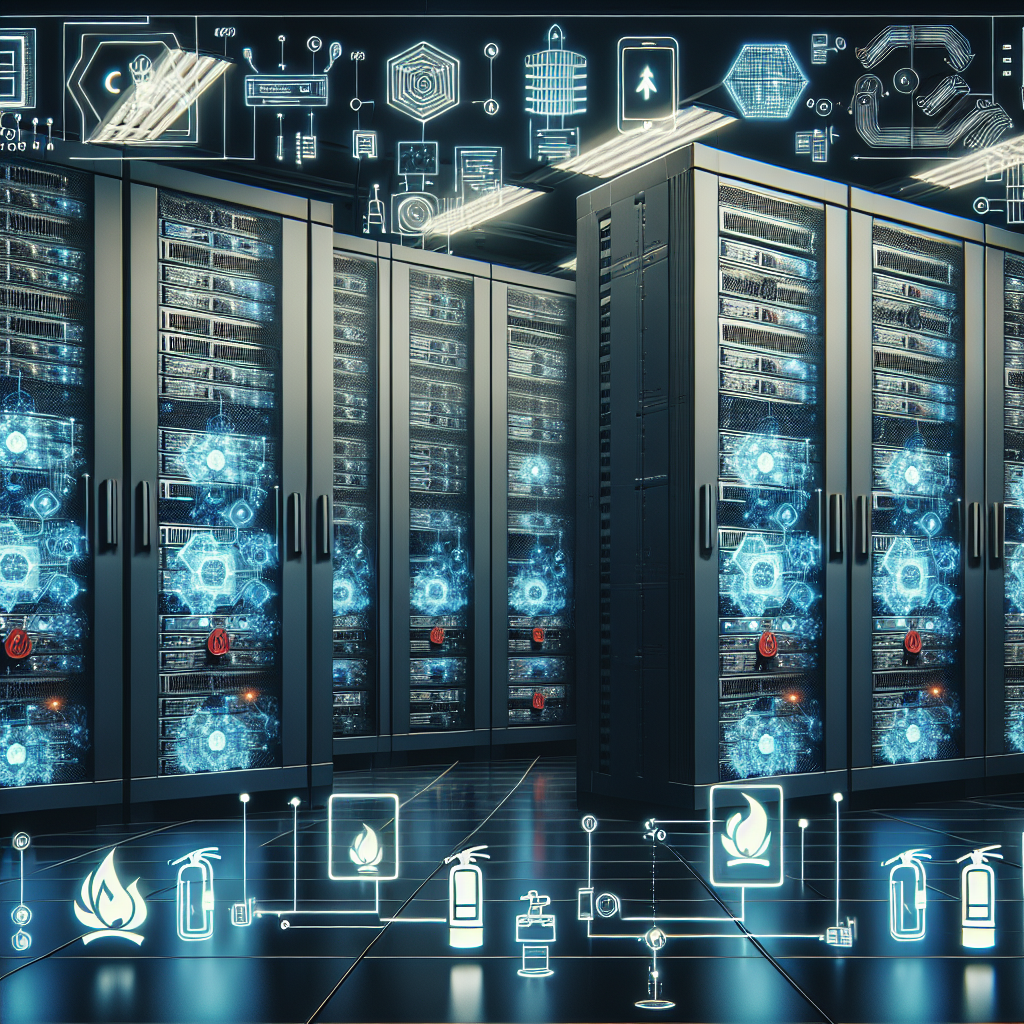
Fire Suppression Technology Advancements for Data Centers: What You Need to Know
Data centers play a crucial role in today’s digital world, housing and processing massive amounts of data that power everything from email communication to online shopping. With the increasing reliance on data centers for storing and accessing information, the risk of fire is a serious concern. However, advancements in fire suppression technology have greatly improved the safety and security of these facilities.Traditional fire suppression systems, such as water sprinklers, have been used for decades to protect data centers from fires. While effective at extinguishing flames, these systems can also cause significant damage to sensitive electronic equipment and data stored in the facility. In response to this challenge, new fire suppression technologies have been developed to provide better protection without the risk of collateral damage.
One such advancement is the use of clean agent fire suppression systems. These systems use gases or chemicals to extinguish fires, rather than water. Clean agents are non-conductive and leave no residue, making them ideal for use in data centers where preventing damage to equipment is a top priority. These systems are also environmentally friendly, as they do not deplete the ozone layer like older chemical agents.
Another technology that is gaining popularity in data center fire suppression is the use of inert gas systems. These systems work by displacing oxygen in the room, effectively starving the fire of the oxygen it needs to burn. Inert gas systems are safe for use in occupied spaces and leave no residue behind, making them a reliable and efficient choice for protecting data centers.
Additionally, advancements in detection technology have made it possible to detect fires more quickly and accurately. Early detection is crucial in preventing fires from spreading and causing extensive damage. New smoke and heat detectors are equipped with sophisticated sensors that can detect even small amounts of smoke or heat, triggering the fire suppression system to activate before the fire has a chance to grow.
Overall, the advancements in fire suppression technology have greatly improved the safety and security of data centers. By implementing these new systems, data center operators can protect their valuable equipment and data from the devastating effects of fire. As technology continues to evolve, it is important for data center operators to stay informed about the latest advancements in fire suppression technology and ensure their facilities are equipped with the most effective and reliable systems available.
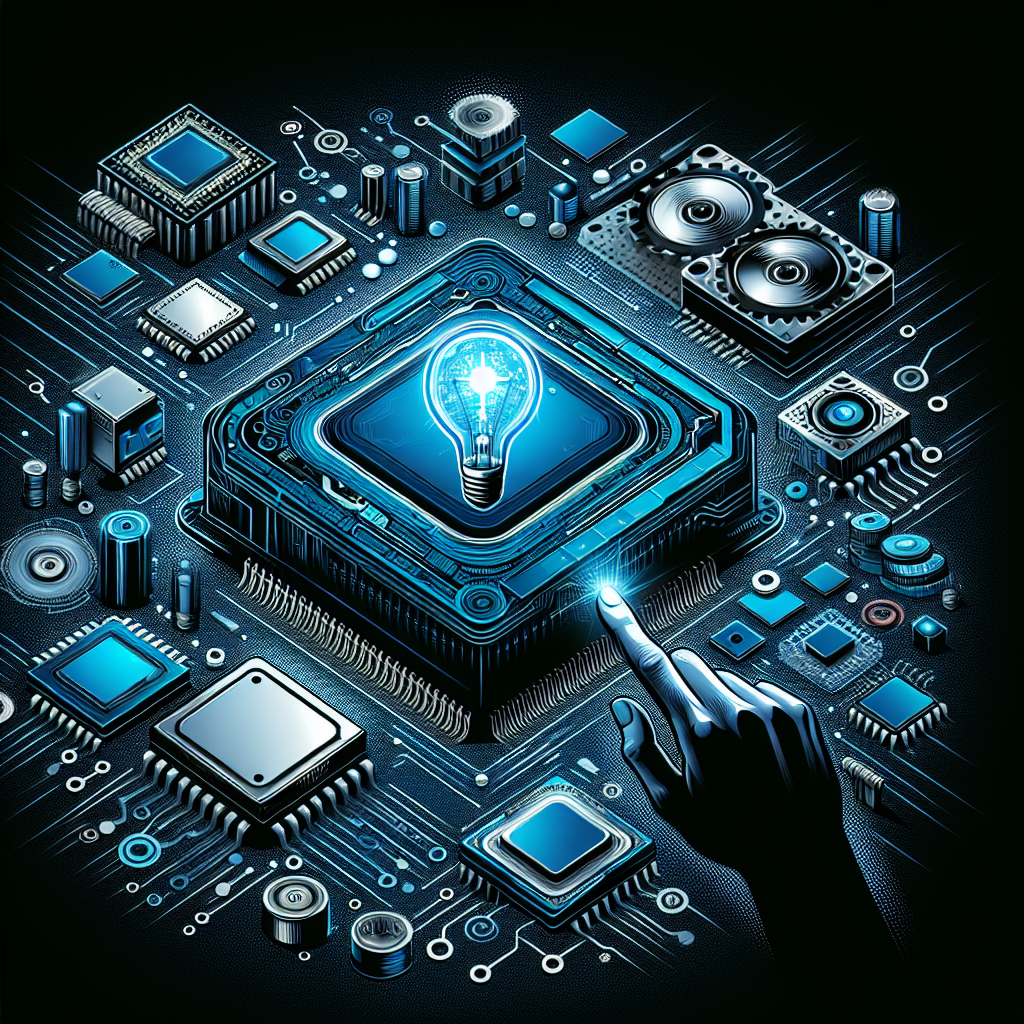
Exploring AMD’s Innovative Technology Advancements
Advanced Micro Devices (AMD) has been making waves in the technology industry with its innovative advancements that are pushing the boundaries of what is possible. From cutting-edge processors to high-performance graphics cards, AMD is leading the charge in creating products that cater to the increasingly demanding needs of consumers and businesses alike.One of AMD’s most notable advancements is its Ryzen line of processors, which have quickly become a favorite among gamers, content creators, and professionals. These processors are built on AMD’s Zen architecture, which delivers impressive performance and efficiency. With multiple cores and threads, Ryzen processors can handle multitasking with ease, making them ideal for those who require a powerful and reliable computing experience.
AMD has also made significant strides in the graphics card market with its Radeon series. These GPUs are designed for gaming enthusiasts and professionals who demand high-quality graphics and smooth gameplay. The latest Radeon RX 6000 series features ray tracing technology and high frame rates, ensuring a visually stunning gaming experience.
In addition to its processors and graphics cards, AMD is also investing heavily in technology advancements such as artificial intelligence and machine learning. The company’s EPYC processors are designed for data centers and cloud computing, offering unparalleled performance and scalability for demanding workloads.
Moreover, AMD’s commitment to sustainability and energy efficiency is evident in its products. The company’s 7nm process technology reduces power consumption while increasing performance, making AMD’s products not only powerful but also environmentally friendly.
Overall, AMD’s innovative technology advancements are setting the stage for the future of computing. With a focus on performance, efficiency, and sustainability, AMD is poised to continue leading the industry and shaping the way we interact with technology. Whether you’re a gamer, content creator, or business professional, AMD has a solution that will meet your needs and exceed your expectations.
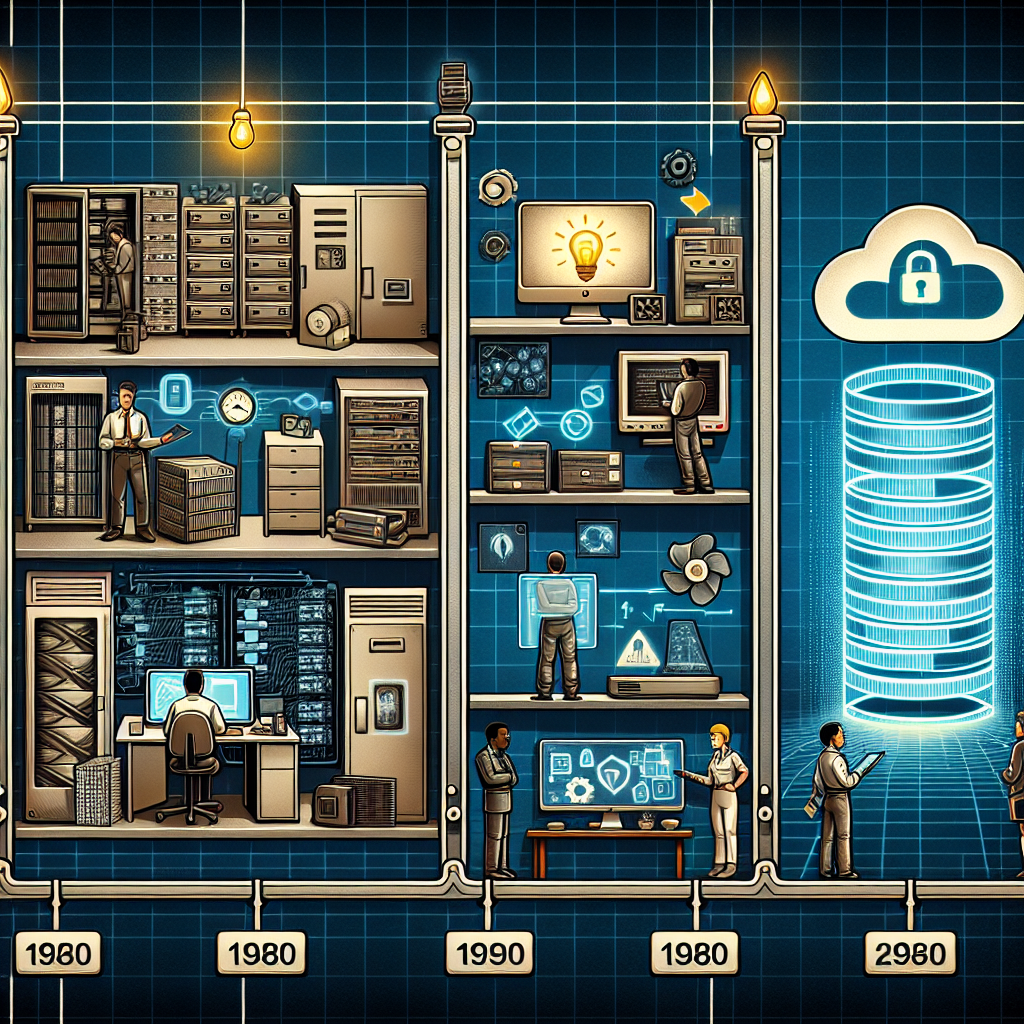
The Evolution of Data Center Security: Advancements in Technology and Strategies
Data centers are the backbone of modern businesses, serving as the centralized hub for storing, processing, and transmitting data. With the increasing reliance on digital technologies, data centers have become prime targets for cyberattacks and unauthorized access. As a result, data center security has evolved significantly over the years, with advancements in technology and strategies to combat these threats.In the early days of data centers, security measures were focused on physical safeguards such as locked doors, security guards, and surveillance cameras. While these measures were effective to some extent, they were not enough to protect against sophisticated cyber threats. As technology advanced, so did the methods used to secure data centers.
One of the key advancements in data center security is the use of encryption to protect data both at rest and in transit. Encryption scrambles data into a code that can only be deciphered with the correct key, making it virtually impossible for hackers to access sensitive information. This has become a standard practice in data center security, ensuring that data remains secure even if it falls into the wrong hands.
Another important development in data center security is the implementation of multi-factor authentication (MFA) systems. MFA requires users to provide two or more forms of verification before gaining access to the data center, such as a password and a fingerprint scan. This adds an extra layer of security, making it more difficult for unauthorized users to infiltrate the system.
In addition to these technological advancements, data center security strategies have also evolved to be more proactive in identifying and mitigating threats. Security monitoring tools and software are now used to continuously monitor network traffic for any suspicious activity, alerting security teams to potential breaches in real-time. This allows for quicker response times and minimizes the impact of cyberattacks.
Furthermore, the rise of cloud computing has also changed the landscape of data center security. With more businesses opting to store their data in the cloud, security measures have had to adapt to protect data in a virtual environment. Cloud security solutions such as encryption, access controls, and regular security audits are now essential in ensuring the safety of data stored in the cloud.
Overall, the evolution of data center security has been driven by the increasing sophistication of cyber threats and the need to protect sensitive information. By leveraging advancements in technology and implementing robust security strategies, businesses can ensure that their data centers remain secure and resilient against potential attacks. As technology continues to evolve, so too will the measures used to safeguard data centers, ensuring that they remain at the forefront of data security.
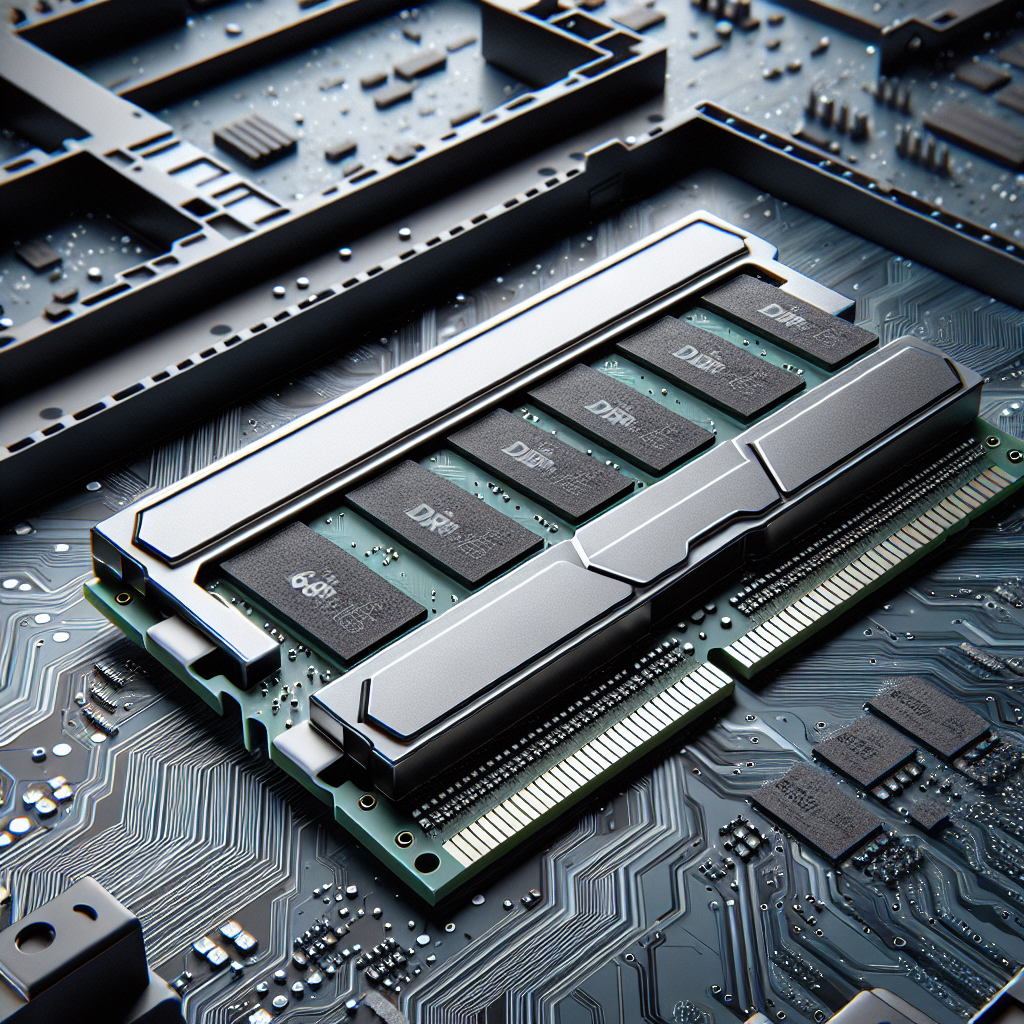
The Latest Advancements in Memory Technology: 64GB DDR5 RAM
In the world of technology, advancements are constantly being made to improve the performance and efficiency of our devices. One area that has seen significant progress in recent years is memory technology. With the demand for faster and more powerful computers, developers have been working tirelessly to push the boundaries of what is possible.The latest breakthrough in memory technology comes in the form of 64GB DDR5 RAM. DDR5, which stands for Double Data Rate 5, is the fifth generation of DDR memory, and it promises to revolutionize the way we use and interact with our devices. With an impressive capacity of 64GB, DDR5 RAM is capable of handling even the most demanding tasks with ease.
One of the key features of DDR5 RAM is its improved speed and efficiency. With a data transfer rate of up to 8400 MT/s, DDR5 RAM is significantly faster than its predecessor, DDR4. This means that users can expect faster load times, smoother multitasking, and improved overall performance when using DDR5 RAM.
In addition to its speed, DDR5 RAM also offers increased bandwidth, allowing for more data to be processed simultaneously. This means that users can run more applications at once without experiencing a decrease in performance. This is particularly useful for gamers, content creators, and anyone who relies on their computer for intensive tasks.
Another benefit of DDR5 RAM is its improved power efficiency. By using less power to operate, DDR5 RAM can help to extend the battery life of laptops and other portable devices. This is especially important as more and more people are working remotely and relying on their devices for longer periods of time.
Overall, the introduction of 64GB DDR5 RAM represents a significant step forward in memory technology. With its impressive speed, efficiency, and capacity, DDR5 RAM is set to revolutionize the way we use our devices. As technology continues to advance, we can expect even more exciting developments in memory technology in the coming years.
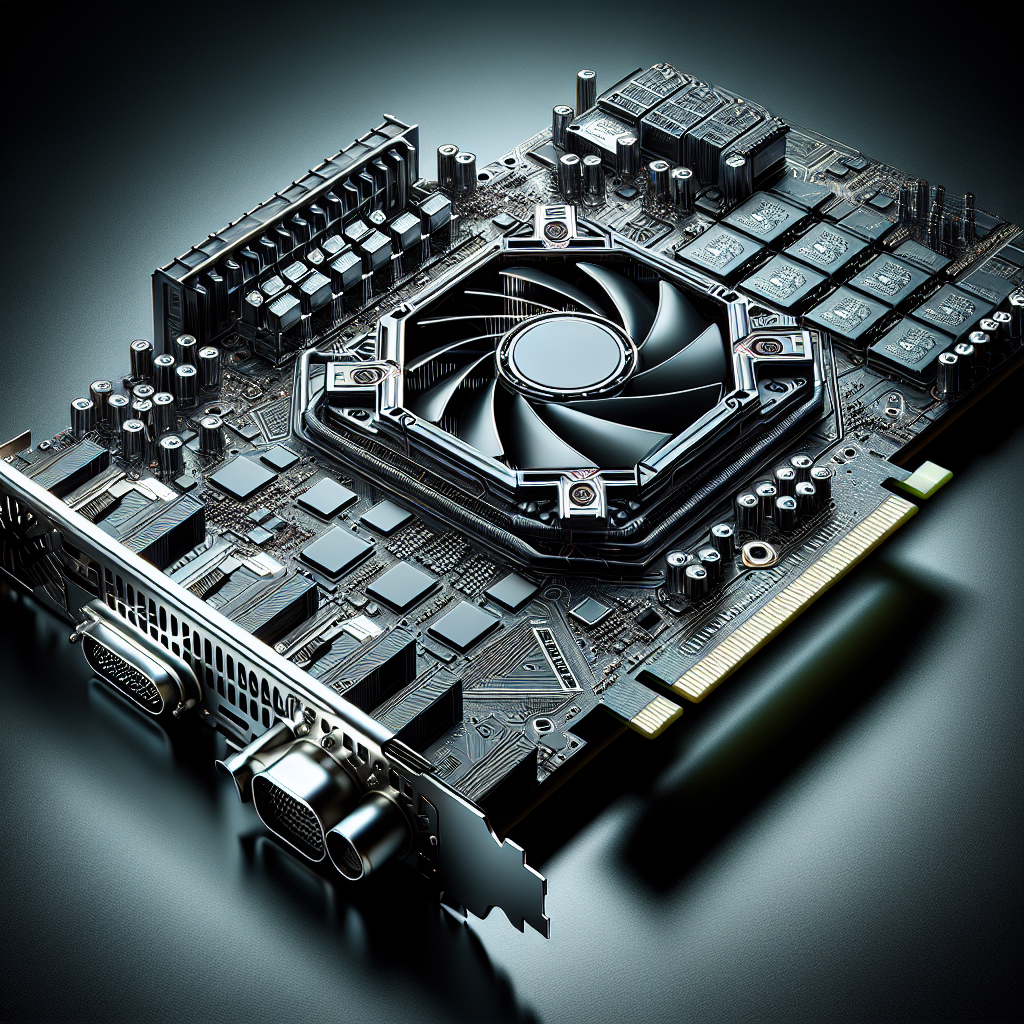
The Latest Advancements in Graphics: NVIDIA GeForce RTX 4070
NVIDIA has been at the forefront of graphics technology for years, consistently pushing the boundaries of what is possible in terms of visual performance. The latest addition to their lineup, the GeForce RTX 4070, is no exception. With a host of new features and advancements, this graphics card is set to revolutionize the way we experience games and other visually demanding applications.One of the key advancements in the GeForce RTX 4070 is the introduction of NVIDIA’s new Ampere architecture. This architecture is designed to deliver unparalleled levels of performance and efficiency, allowing for smoother gameplay and more realistic visuals. The RTX 4070 also features ray tracing technology, which allows for more accurate lighting and shadows in games, creating a more immersive experience for the player.
Another key feature of the RTX 4070 is its support for DLSS (Deep Learning Super Sampling). This technology uses artificial intelligence to upscale lower resolution images to higher resolutions, allowing for smoother gameplay and better performance. This means that even if you are playing a game at lower settings, the RTX 4070 can help to enhance the visuals and make them look more realistic.
In terms of raw power, the RTX 4070 is no slouch. With a significant increase in CUDA cores and memory bandwidth compared to its predecessors, this graphics card is capable of handling even the most demanding games and applications with ease. Whether you are a hardcore gamer or a professional graphic designer, the RTX 4070 has the performance you need to get the job done.
Overall, the NVIDIA GeForce RTX 4070 represents a significant leap forward in graphics technology. With its advanced features, improved performance, and support for cutting-edge technologies like ray tracing and DLSS, this graphics card is sure to impress even the most discerning users. If you are looking for the ultimate in visual performance, look no further than the GeForce RTX 4070.
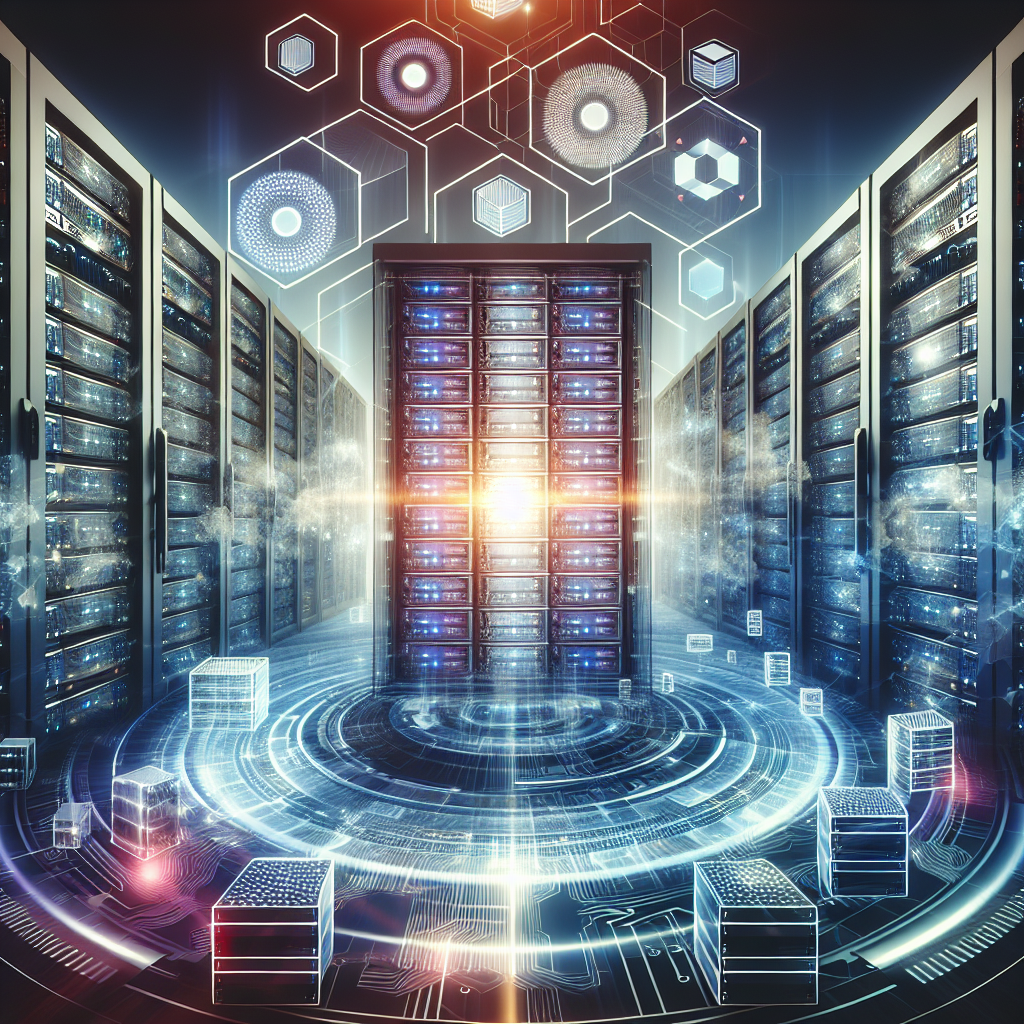
The Future of Data Storage: NetApp’s Innovations and Advancements
In today’s digital age, data storage has become an essential component of businesses and organizations worldwide. With the exponential growth of data being generated, stored, and analyzed every day, the need for efficient and reliable data storage solutions has never been more critical. NetApp, a leading provider of data storage and management solutions, has been at the forefront of innovations and advancements in the field of data storage, shaping the future of how data is stored, managed, and accessed.One of the key innovations that NetApp has brought to the table is its data fabric architecture, which allows organizations to seamlessly manage and move data across different environments, whether on-premises or in the cloud. This flexibility enables businesses to optimize their storage infrastructure and adapt to changing business needs quickly and efficiently. By leveraging NetApp’s data fabric, organizations can ensure that their data is always available, secure, and easily accessible, no matter where it resides.
NetApp has also been a pioneer in the development of flash storage technology, which offers faster performance, lower latency, and higher reliability compared to traditional spinning disk drives. With NetApp’s all-flash storage arrays, organizations can accelerate their applications, improve productivity, and reduce their overall storage costs. This advancement in flash storage technology has revolutionized the way businesses store and access their data, enabling them to make real-time decisions and gain a competitive edge in today’s fast-paced business environment.
In addition to flash storage, NetApp has been investing heavily in the development of cloud-based storage solutions, such as NetApp Cloud Volumes, which provide organizations with scalable, secure, and cost-effective storage options in the cloud. By leveraging NetApp’s cloud storage solutions, businesses can seamlessly extend their on-premises storage infrastructure to the cloud, enabling them to leverage the agility and scalability of cloud computing without sacrificing data security or performance.
Looking ahead, NetApp continues to push the boundaries of data storage innovation, with a strong focus on artificial intelligence and machine learning technologies. By integrating AI and ML capabilities into its storage solutions, NetApp is enabling organizations to automate and optimize their data management processes, making it easier to extract valuable insights from their data and drive business growth.
In conclusion, the future of data storage is bright, thanks to NetApp’s relentless pursuit of innovation and advancements in the field. With its data fabric architecture, flash storage technology, cloud-based solutions, and AI-powered capabilities, NetApp is helping businesses unlock the full potential of their data and drive digital transformation. As businesses continue to generate and store vast amounts of data, NetApp’s innovations will play a crucial role in shaping the future of data storage and empowering organizations to thrive in the digital age.
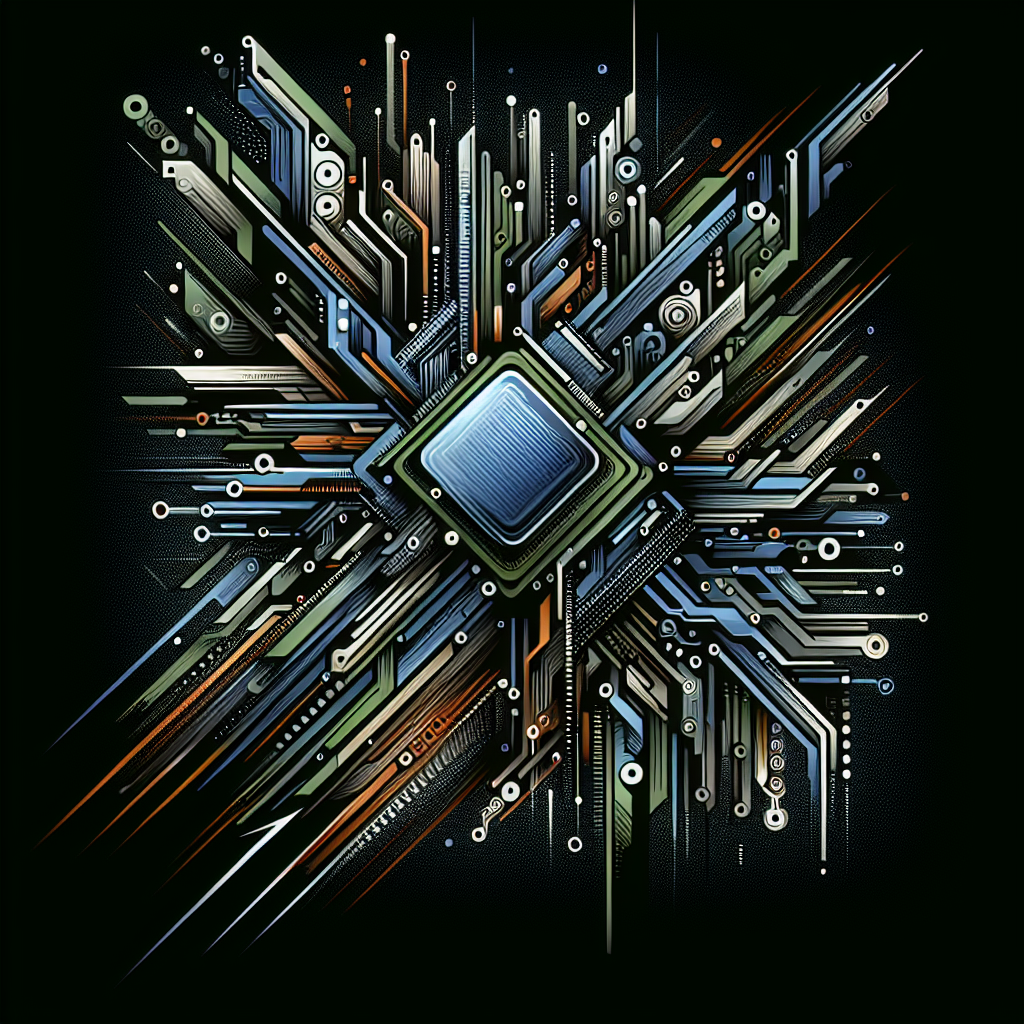
Exploring the Latest Advancements in AMD Technology
Advanced Micro Devices (AMD) has been making waves in the technology industry with its cutting-edge advancements in computer processing. From their innovative Ryzen processors to their powerful Radeon graphics cards, AMD has been pushing the boundaries of what is possible in terms of performance and efficiency.One of the latest advancements in AMD technology is the introduction of their Ryzen 5000 series processors. These processors are built on the Zen 3 architecture, which boasts a 19% increase in instructions per clock compared to the previous generation. This results in a significant boost in performance across a variety of tasks, from gaming to content creation.
In addition to the Ryzen 5000 series processors, AMD has also made significant advancements in their Radeon graphics cards. The latest Radeon RX 6000 series graphics cards feature AMD’s new RDNA 2 architecture, which delivers a 50% increase in performance per watt compared to the previous generation. This means that gamers can enjoy higher frame rates and better visual fidelity without compromising on power efficiency.
Another area where AMD is making advancements is in the realm of artificial intelligence. AMD’s ROCm (Radeon Open Compute) platform is designed to enable developers to harness the power of AMD’s GPUs for AI and machine learning applications. With support for popular frameworks like TensorFlow and PyTorch, AMD is positioning itself as a key player in the AI space.
Overall, AMD’s latest advancements in technology are pushing the boundaries of what is possible in terms of performance and efficiency. Whether you’re a gamer, content creator, or AI developer, there is something for everyone in AMD’s lineup of products. With their commitment to innovation and cutting-edge technology, AMD is sure to continue making waves in the industry for years to come.
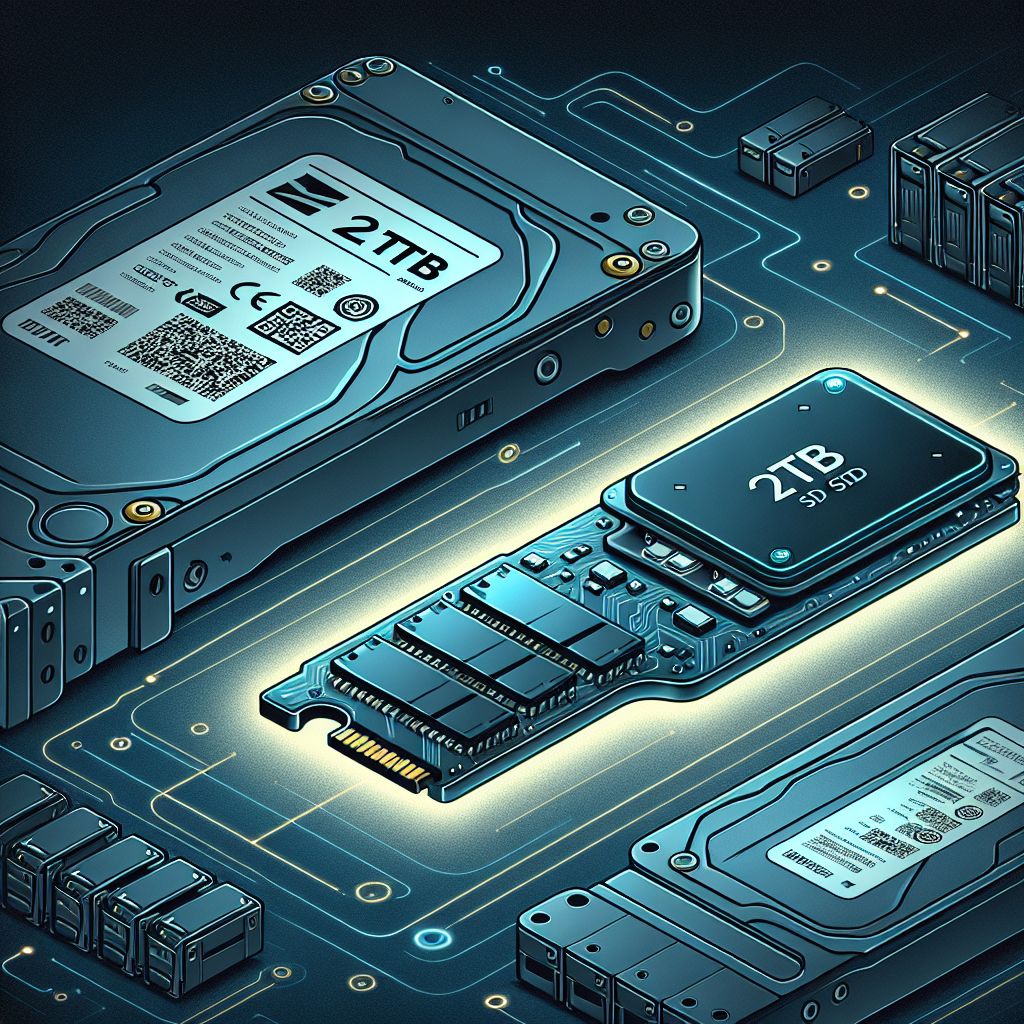
The Future of Storage: Exploring the Advancements of 2TB NVMe SSD Technology
In today’s fast-paced digital world, the need for high-capacity storage solutions is greater than ever. With the ever-increasing amount of data being generated and consumed, traditional storage devices like hard disk drives (HDDs) are struggling to keep up with the demand for faster and more efficient storage solutions. This is where NVMe SSD technology comes in.NVMe, or Non-Volatile Memory Express, is a new storage protocol designed specifically for solid-state drives (SSDs) to provide faster data transfer speeds and lower latency compared to traditional storage devices. NVMe SSDs are becoming increasingly popular in the market due to their superior performance and reliability.
One of the latest advancements in NVMe SSD technology is the introduction of 2TB NVMe SSDs. These high-capacity SSDs offer a significant increase in storage space compared to previous models, making them ideal for storing large amounts of data such as multimedia files, games, and applications.
The 2TB NVMe SSDs also come with improved read and write speeds, allowing for faster data transfer and access times. This is especially beneficial for users who work with large files or run resource-intensive applications that require quick access to data.
Another key feature of 2TB NVMe SSDs is their compact size and low power consumption. This makes them ideal for use in laptops, ultrabooks, and other portable devices where space and battery life are limited.
In addition to their high capacity and superior performance, 2TB NVMe SSDs also offer enhanced data security features such as hardware encryption and secure erase capabilities. This ensures that your data remains safe and protected from unauthorized access.
Overall, the future of storage is looking bright with the advancements of 2TB NVMe SSD technology. With their high capacity, fast data transfer speeds, and enhanced security features, these SSDs are set to revolutionize the way we store and access data in the years to come. Whether you are a professional looking for a reliable storage solution or a casual user in need of extra space, 2TB NVMe SSDs are definitely worth considering for your storage needs.
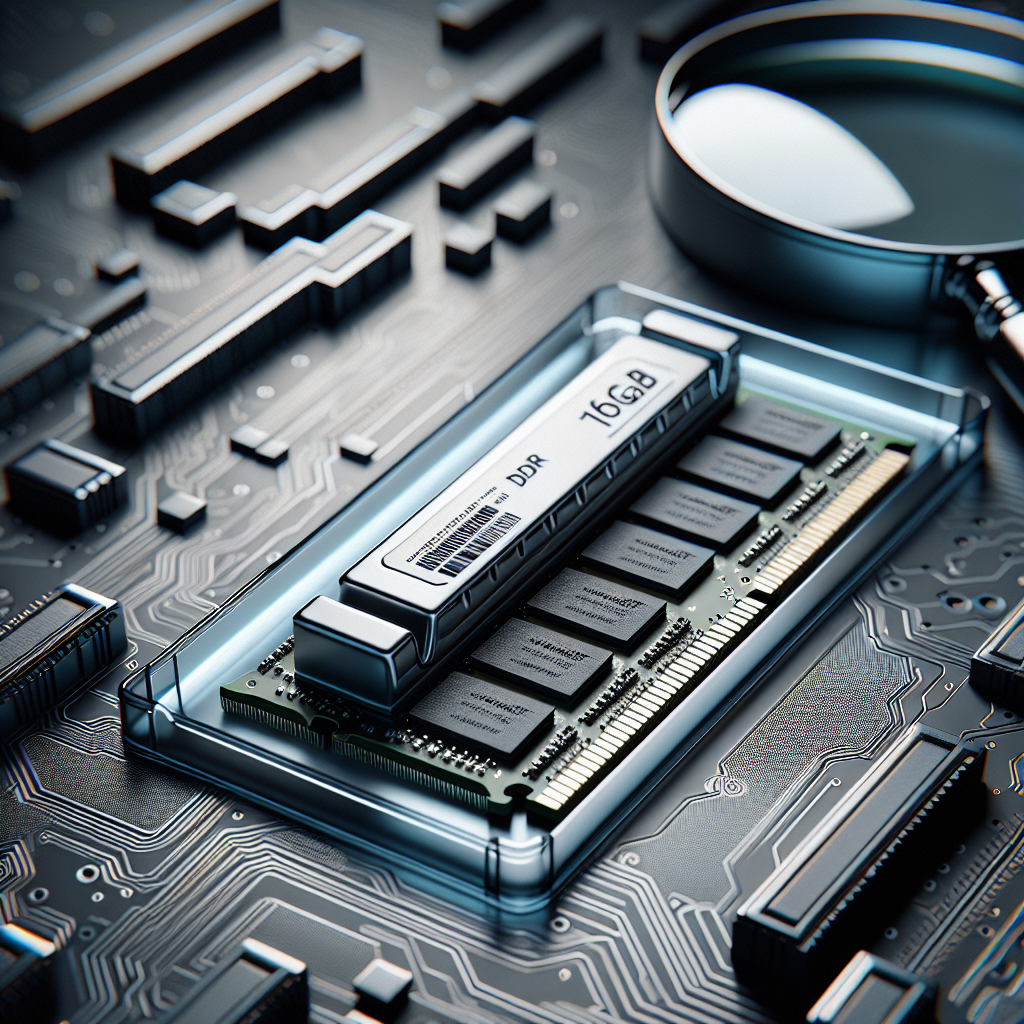
Exploring the Latest Advancements in 16GB DDR5 Memory Technology
With technology constantly evolving and advancing, it is no surprise that memory technology is also seeing significant improvements. One of the latest advancements in memory technology is the introduction of 16GB DDR5 memory.DDR5, which stands for Double Data Rate 5, is the fifth generation of DDR memory technology. It offers faster data transfer speeds, increased bandwidth, and improved power efficiency compared to its predecessor, DDR4. This makes DDR5 an attractive option for high-performance computing applications, such as gaming, artificial intelligence, and data processing.
One of the key features of DDR5 memory is its increased capacity. With 16GB of memory, users can expect better multitasking capabilities and improved overall performance. This is especially beneficial for those who use resource-intensive applications or run multiple programs simultaneously.
In addition to increased capacity, DDR5 memory also offers faster data transfer speeds. This is achieved through a higher data rate and improved signal integrity, resulting in quicker access to data and improved system responsiveness. This can lead to faster load times, smoother gameplay, and overall better performance in demanding tasks.
Another important aspect of DDR5 memory technology is its improved power efficiency. DDR5 memory modules are designed to operate at lower voltages, which helps reduce power consumption and heat generation. This is not only beneficial for the environment but also for users who want to lower their energy bills and improve the longevity of their hardware.
Overall, the latest advancements in 16GB DDR5 memory technology are a game-changer for those who require high-performance computing capabilities. With increased capacity, faster data transfer speeds, and improved power efficiency, DDR5 memory offers a significant upgrade over previous generations of memory technology. As technology continues to advance, we can expect even more innovations in memory technology that will further improve the performance and efficiency of our computing systems.
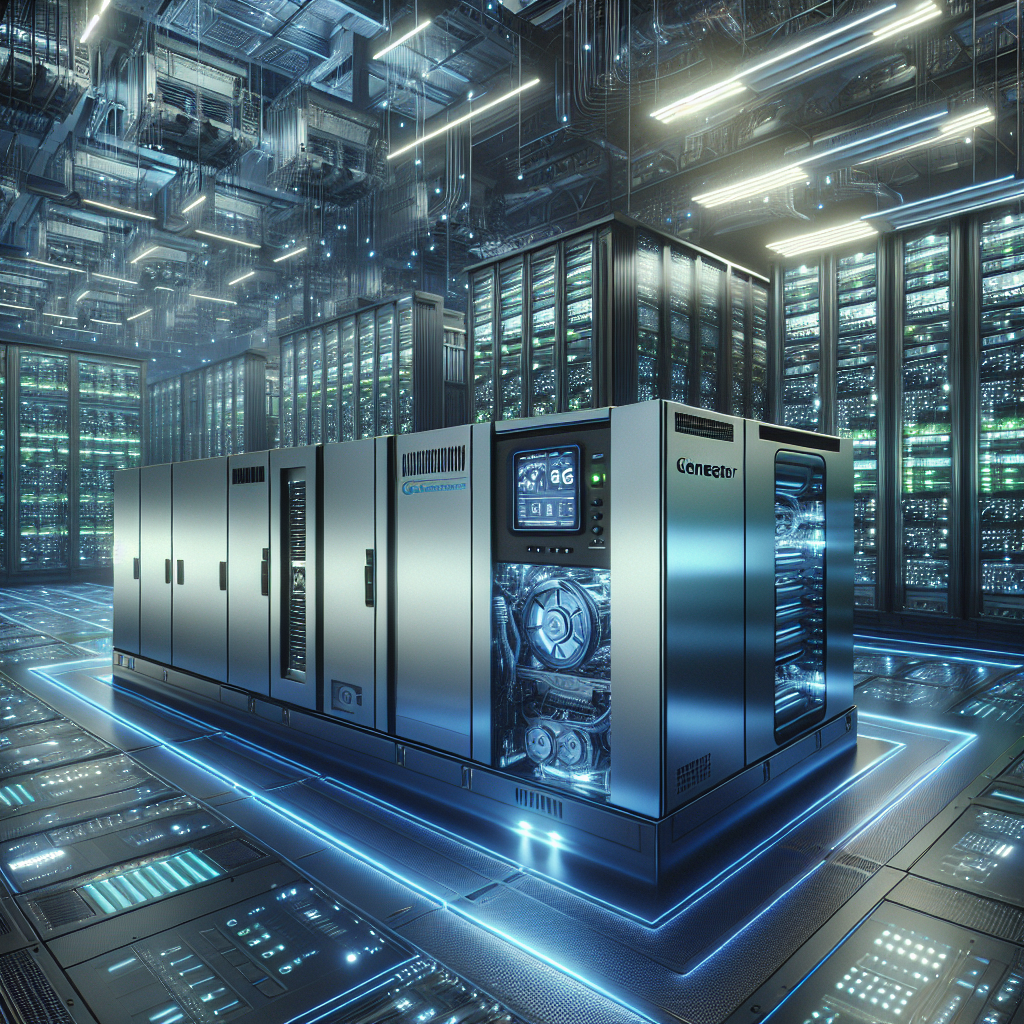
The Future of Backup Power: Advancements in Data Center Generator Technology
In today’s fast-paced world, data centers play a crucial role in storing and managing vast amounts of information. With the rise of cloud computing, big data, and the Internet of Things, the demand for reliable backup power solutions in data centers has never been higher. As a result, advancements in generator technology are constantly evolving to meet the growing needs of these critical facilities.One of the key challenges facing data centers is ensuring uninterrupted power supply in the event of a power outage. This is where backup generators come into play, providing a reliable source of power to keep servers, networking equipment, and other critical infrastructure running smoothly. In the past, traditional diesel generators were the go-to solution for backup power. However, these generators have their limitations, including high maintenance costs, noise pollution, and environmental concerns.
To address these challenges, manufacturers are developing new and innovative generator technologies that offer improved efficiency, reliability, and sustainability. One such advancement is the use of natural gas generators, which are becoming increasingly popular in data center applications. Natural gas generators offer several benefits over traditional diesel generators, including lower emissions, quieter operation, and lower fuel costs. In addition, natural gas is a more environmentally friendly fuel source, making it an attractive option for data centers looking to reduce their carbon footprint.
Another emerging trend in backup power technology is the use of hybrid generators, which combine multiple power sources to provide a more reliable and efficient backup power solution. These hybrid generators can switch between different fuel sources, such as diesel, natural gas, and battery power, depending on the availability and cost of fuel. This flexibility ensures that data centers can maintain continuous operations even in the event of a prolonged power outage.
In addition to advancements in fuel technology, manufacturers are also focusing on improving the efficiency and reliability of generator systems. Newer generators are equipped with advanced monitoring and control systems that allow data center operators to remotely monitor and manage the generator performance in real-time. This proactive approach helps to identify potential issues before they escalate into critical failures, ensuring maximum uptime and performance for the data center.
As data centers continue to expand and evolve, the demand for reliable backup power solutions will only continue to grow. With advancements in generator technology, data center operators can rest assured that they have access to the latest and most innovative backup power solutions to keep their critical infrastructure up and running. Whether it’s natural gas generators, hybrid generator systems, or advanced monitoring and control technology, the future of backup power in data centers looks brighter than ever.
